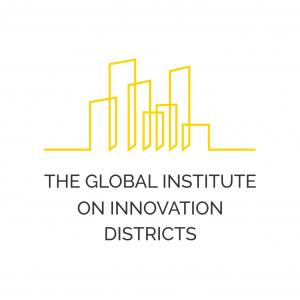Source: The scope and complexity of district ambitions require district leaders to organize for success, including devising how to effectively govern. It also means the ability to engage, or “pull”, as many levers as possible.
NEW YORK, UNITED STATES, April 10, 2024 /EINPresswire.com/ — The Global Institute on Innovation Districts (GIID.org) today released its latest research paper, “Innovation Districts and the Centrality of Land.” This research explores the transformative role of land use in enabling innovation districts to take on ‘wicked problems’ such as climate change, infectious diseases, and social inequities in cities and regions.
The spatial geography of innovation is shifting toward more urban-centered innovation districts. Districts are mixed-use communities that encourage creativity and collaboration due to their clustering of academic institutions, corporate research and development hubs, and vibrant entrepreneurial ecosystems.
Julie Wagner, founder of The Global Institute and author of the research, offers one of her most important insights from the investigations, which is that “few levers have as broad an impact and possess the same transformative power as land.”
Julie Wagner has worked exclusively in the emerging field of innovation districts for over 15 years. This prompted a deeper evaluation of why certain districts ambitiously move forward while others slow down or stall. After nearly two years of deep research on 10 international innovation districts, research clearly concludes the importance of effective governance, such as how district leaders work together in a formal and structured way. This paper specifically highlights the centrality of land in achieving detailed district ambitions, such as training local talent for changing career pathways. “When land is connected to districts’ governance, the power of land is magnified,” concludes the research.
The paper identifies seven crucial strategies that districts have used, with specific examples that innovation districts, landowners, and businesses looking to play a leading role in scaling solutions can use. One example is how municipal governments have incentivized landowners to create spaces for residents to learn and live in exchange for allowing more building density. Another example is the development of a “light” innovation district zone—a geography defined by district leaders—to determine which office buildings pay an annual building fee or service charge.
These fees are then used to fund district-wide social programs, events intended to accelerate innovation, placemaking, mentoring, or training programs to supplement the talent pipeline. These ideas are grounded in the belief that as the value of land changes as districts become more successful, that value should be captured and used to support both the district’s fragile ecosystem and important social needs, such as education, workforce training, and affordable housing.
These findings further clarify an opportunity for global corporations, local companies, and district leaders to work together to develop the right type of land-centered transformations needed to facilitate collaborative innovation, drive decarbonization, and advance equity.
Ends
About the Global Institute on Innovation Districts
The Global Institute on Innovation Districts is a global-reaching, not-for-profit organization dedicated to conducting independent and practice-oriented research on innovation districts—new geographies of innovation emerging primarily in cities and urbanizing areas. Drawing on deep analytics and proven impact, The Global Institute seeks to identify how districts transform into new engines of city and regional economic growth. During a time of uneven growth, our research and work with a global network of districts aim to identify new systems for advancing inclusive innovation.
For more information, please visit www.giid.org
For interviews, please contact Dina at daletras@giid.org
Dina Aletras
The Global Institute on Innovation Districts
daletras@giid.org



